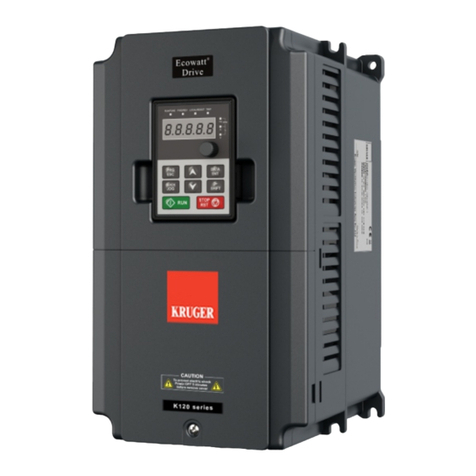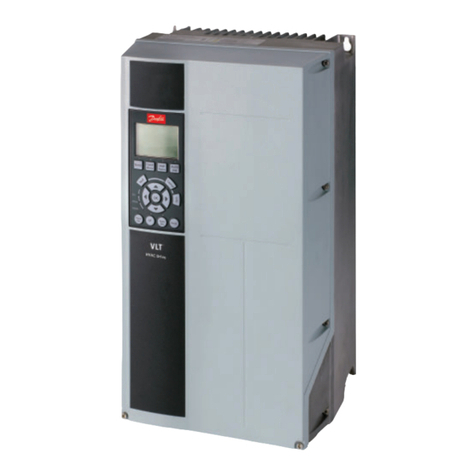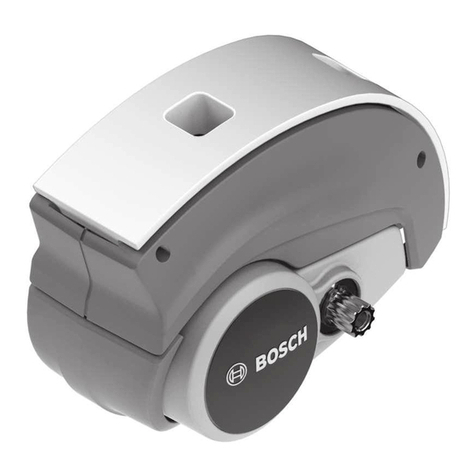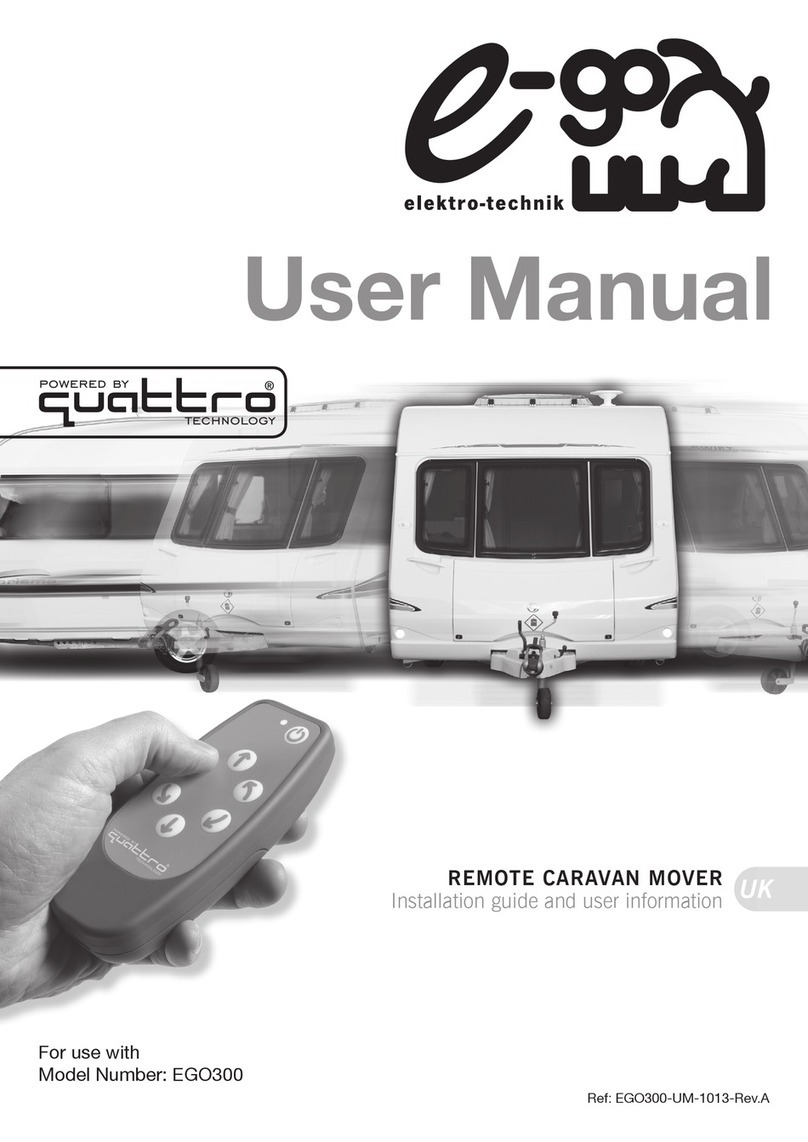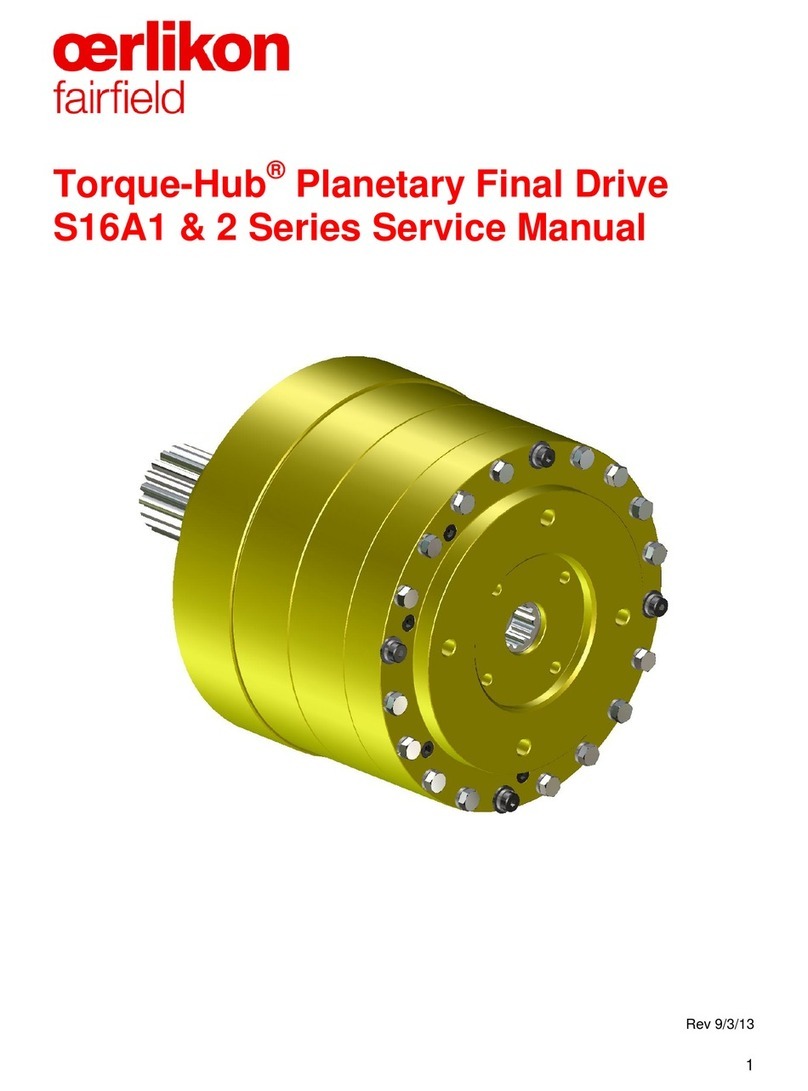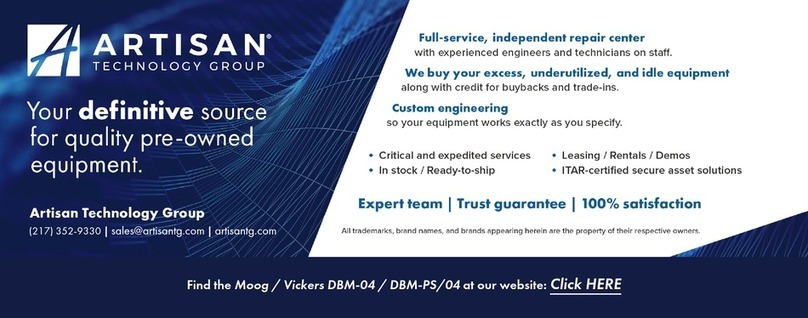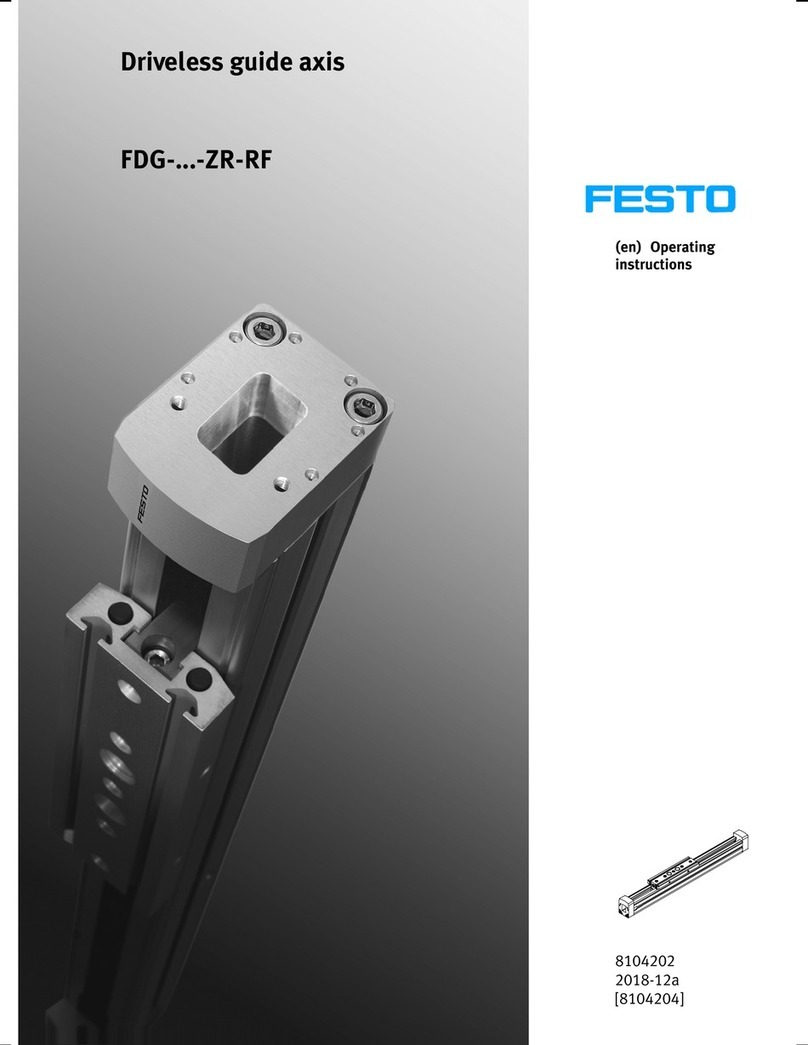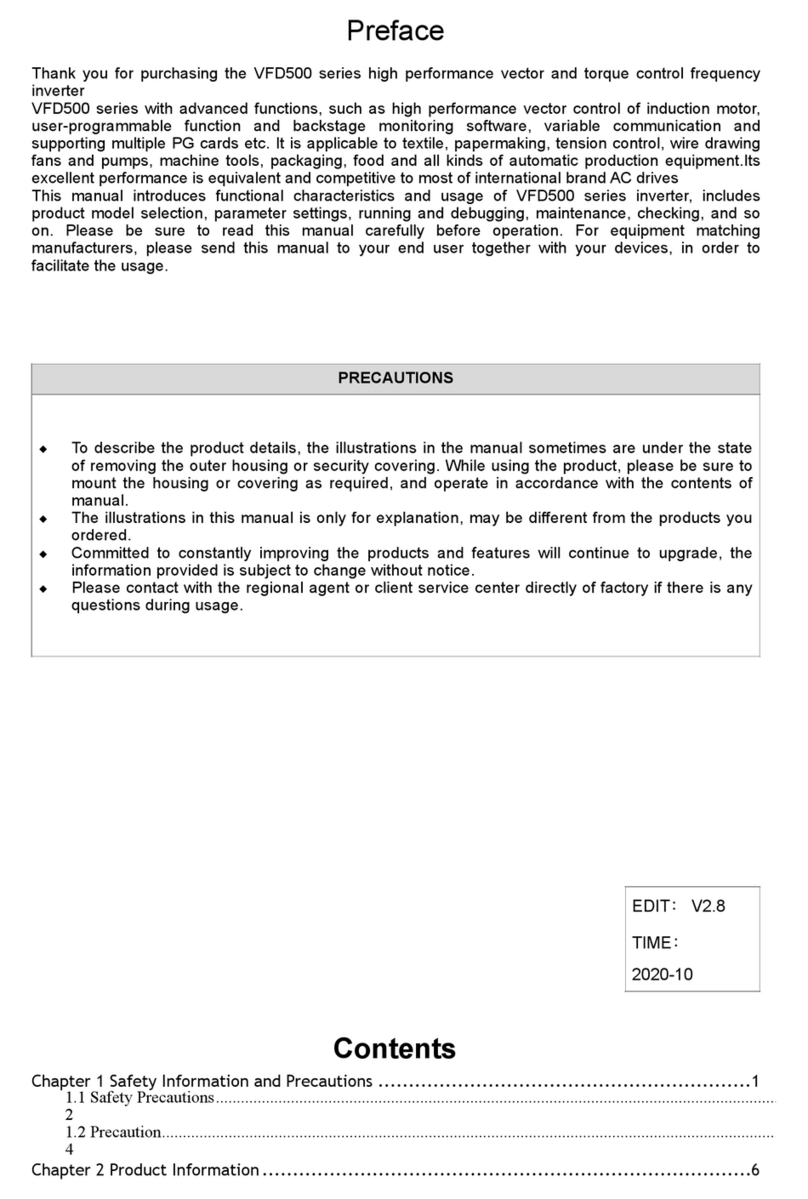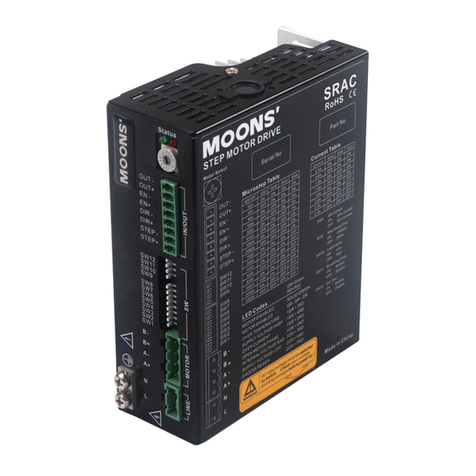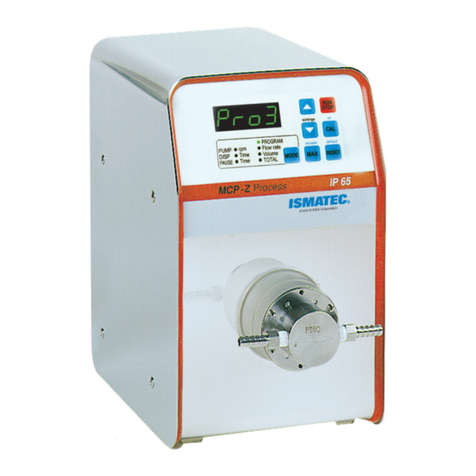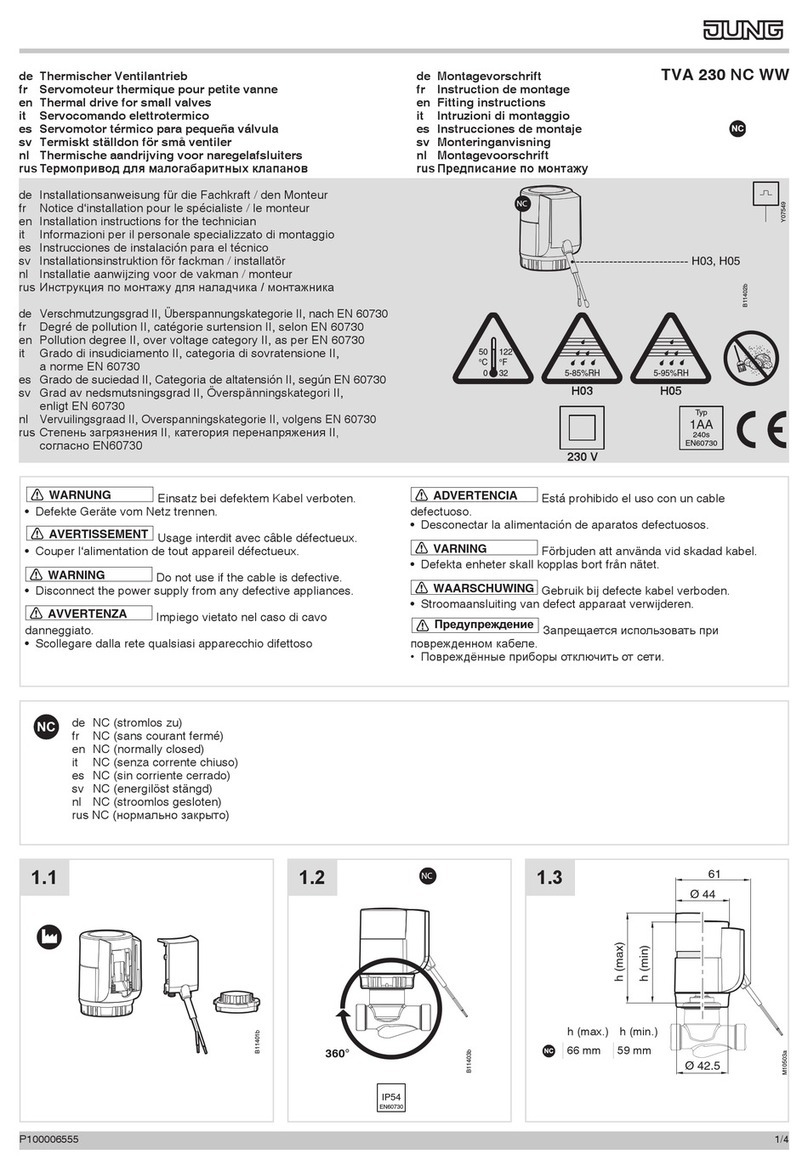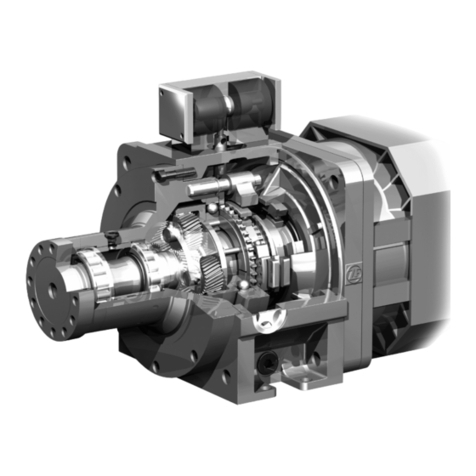Kruger Ecowatt K320 Series User manual


Ecowatt®Drive K320 series Change history
No.
Change description
Version
Release date
1
First release
V1.0
June 2021

Ecowatt®Drive K320 series Preface
-i-
Preface
The Ecowatt Drive K320 series is a high performance variable-frequency drive (VFD) that
specific designed to be applied in Fan application which integrates the latest Safety and
Energy-saving functions for the demand control ventilation system. It can drive both
synchronous motors and asynchronous motors.
[Energy saving]
This VFD adopts dedicated PID control mode for Demand Control Ventilation system to
optimizes the voltage output of the VFD to the actual load of the FAN motor, thus minimizing
its power consumption.
[Easy control]
It supports multiple kinds of popular control signal (0-10V signal, 4-20mA) and Modbus
communication to realize complicated system solutions.
[High performance]
It armed with advanced vector control technology and the latest digital processor dedicated
for motor control, thus enhancing product reliability and adaptability to the environment.
[Reliable]
Ecowatt Drive K320 uses high power density design. Some power ranges carry built-in DC
reactor and Braking unit to save installation space. Through overall EMC design, it can satisfy
the low noise and low electromagnetic interference requirements to cope with challenging
grid, temperature, humidity and dust conditions, thus greatly improving product reliability.
This operation manual presents installation wiring, parameter setup, fault diagnosis and
troubleshooting, and precautions related to daily maintenance.
Read this manual carefully before installation to ensure the VFD is installed and operated in a
proper manner to give full play to its excellent performance and powerful functions.
If the product is ultimately used for military affairs or manufacture of weapon, it will be listed
on the export control formulated by Foreign Trade Law of the People's Republic of China.
Rigorous review and necessary export formalities are needed when exported. Our company
reserves the right to update the information of our products.

Ecowatt®Drive K320 series Contents
-ii-
Contents
Preface ........................................................................................................................................................... i
Contents.......................................................................................................................................................... ii
1 Safety precautions......................................................................................................................................1
1.1 What this chapter contains....................................................................................................................1
1.2 Safety definition........................................................................................................................................1
1.3 Warning symbols .....................................................................................................................................1
1.4 Safety guidelines...................................................................................................................................... 2
1.4.1 Delivery and installation............................................................................................................ 2
1.4.2 Commissioning and running................................................................................................... 3
1.4.3 Maintenance and component replacement........................................................................ 4
1.4.4 What to do after scrapping ....................................................................................................... 4
2 Quick startup...............................................................................................................................................5
2.1 What this chapter contains...................................................................................................................5
2.2 Unpacking inspection ............................................................................................................................5
2.3 Checking before applying......................................................................................................................5
2.4 Environment .............................................................................................................................................5
2.5 Installation confirmation ..................................................................................................................... 6
2.6 Basic commissioning............................................................................................................................. 7
3 Product overview .......................................................................................................................................8
3.1 What this chapter contains.................................................................................................................. 8
3.2 Basic principle.......................................................................................................................................... 8
3.3 Product specifications ........................................................................................................................... 9
3.4 Product nameplate.................................................................................................................................12
3.5 Model designation code .......................................................................................................................12
3.6 Product ratings........................................................................................................................................13
3.7 Structure diagram..................................................................................................................................14
4 Installation guidelines ............................................................................................................................15
4.1 What this chapter contains.................................................................................................................15
4.2 Mechanical installation.......................................................................................................................15
4.2.1 Installation environment.........................................................................................................15
4.2.2 Installation direction.................................................................................................................16
4.2.3 Installation mode .......................................................................................................................17
4.2.4 Single-unit installation ............................................................................................................18
4.2.5 Multiple-unit installation........................................................................................................18
4.2.6 Vertical installation...................................................................................................................19
4.2.7 Tilted installation...................................................................................................................... 20
4.3 Main circuit standard wiring.............................................................................................................21
4.3.1 Main circuit wiring diagram...................................................................................................21

Ecowatt®Drive K320 series Contents
-iii-
4.3.2 Main circuit terminal diagram ............................................................................................. 22
4.3.3 Wiring procedure of the main circuit terminals.............................................................24
4.4 Control circuit standard wiring........................................................................................................ 25
4.4.1 Basic control circuit wiring diagram .................................................................................. 25
4.4.2 Input/output signal connection diagram .......................................................................... 27
4.5 Wiring protection.................................................................................................................................. 28
4.5.1 Protecting the VFD and input power cable in short circuit.......................................... 28
4.5.2 Protecting the motor and motor cable in short circuit.................................................. 29
4.5.3 Protecting the motor from thermal overload ...................................................................29
4.5.4 Bypass connection.................................................................................................................... 29
5 Basic operation guidelines.................................................................................................................... 30
5.1 What this chapter contains................................................................................................................ 30
5.2 Keypad introduction............................................................................................................................. 30
5.3 Keypad display....................................................................................................................................... 34
5.3.1 Displaying stopped-state parameters..................................................................................34
5.3.2 Displaying running-state parameters................................................................................. 35
5.3.3 Displaying fault information ................................................................................................. 35
5.4 Operating the VFD by keypad............................................................................................................ 36
5.4.1 Enter/exit menu ......................................................................................................................... 36
5.4.2 List edit ..........................................................................................................................................41
5.4.3 Add parameters to the parameter list displayed in stop/running state .................. 42
5.4.4 Add parameter to common parameter setup list............................................................42
5.4.5 Parameter selection edit interface.......................................................................................43
5.4.6 Parameter setup edit interface..............................................................................................44
5.4.7 State monitoring interface .....................................................................................................44
5.4.8 Motor parameter autotuning .................................................................................................45
5.4.9 Parameter backup ..................................................................................................................... 45
5.4.10 System setup.............................................................................................................................46
5.4.11 Power-on guiding settings....................................................................................................46
5.5 Basic operations.....................................................................................................................................49
5.5.1 What this section contains.....................................................................................................49
5.5.2 Common commissioning procedure...................................................................................49
5.5.3 Vector control.............................................................................................................................. 53
5.5.4 Space voltage vector control mode......................................................................................60
5.5.5 Torque control.............................................................................................................................69
5.5.6 Motor parameters ...................................................................................................................... 73
5.5.7 Start/stop control....................................................................................................................... 78
5.5.8 Frequency setting...................................................................................................................... 83
5.5.9 Analog input................................................................................................................................ 88
5.5.10 Analog output............................................................................................................................ 90

Ecowatt®Drive K320 series Contents
-iv-
5.5.11 Digital input................................................................................................................................ 94
5.5.12 Digital output........................................................................................................................... 103
5.5.13 Simple PLC ............................................................................................................................... 108
5.5.14 Multi-step speed running.....................................................................................................110
5.5.15 PID control.................................................................................................................................112
5.5.16 Running at wobbling frequency ........................................................................................118
5.5.17 Local encoder input................................................................................................................119
5.5.18 Commissioning procedures for closed-loop control, position control and spindle
positioning........................................................................................................................................... 120
5.5.19 Fault handling......................................................................................................................... 127
6 Function parameter list ........................................................................................................................132
5.5 What this chapter contains.............................................................................................................. 132
5.6 Function parameter list..................................................................................................................... 132
7 Troubleshooting .................................................................................................................................... 249
7.1 What this chapter contains..............................................................................................................249
7.2 Indications of alarms and faults ....................................................................................................249
7.3 Fault reset..............................................................................................................................................249
7.4 Fault history..........................................................................................................................................249
7.5 VFD faults and solutions...................................................................................................................249
7.5.1 Details of faults and solutions..............................................................................................250
7.5.2 Other states................................................................................................................................257
7.6 Analysis on common faults.............................................................................................................258
7.6.1 Motor fails to work ..................................................................................................................258
7.6.2 Motor vibrates ..........................................................................................................................259
7.6.3 Overvoltage................................................................................................................................260
7.6.4 Undervoltage.............................................................................................................................260
7.6.5 Unusual heating of motor..................................................................................................... 261
7.6.6 VFD overheating ......................................................................................................................262
7.6.7 Motor stalls during ACC ........................................................................................................263
7.6.8 Overcurrent................................................................................................................................264
7.7 Countermeasures on common interference...............................................................................265
7.7.1 Interference on meter switches and sensors..................................................................265
7.7.2 Interference on RS485 communication ...........................................................................266
7.7.3 Stop failure and indicator shimmering due to motor cable coupling ....................267
7.7.4 Leakage current and interference on RCD ......................................................................268
7.7.5 Live device chassis .................................................................................................................269
8 Maintenance........................................................................................................................................... 270
8.1 What this chapter contains..............................................................................................................270
8.2 Periodical inspection .........................................................................................................................270
8.3 Cooling fan ............................................................................................................................................273

Ecowatt®Drive K320 series Contents
-v-
8.4 Capacitor................................................................................................................................................274
8.4.1 Capacitor reforming ................................................................................................................274
8.4.2 Electrolytic capacitor replacement....................................................................................275
8.5 Power cable...........................................................................................................................................275
9 Communication ..................................................................................................................................... 276
9.1 What this chapter contains..............................................................................................................276
9.2 Modbus protocol introduction ........................................................................................................276
9.3 Application............................................................................................................................................276
9.3.1 RS485............................................................................................................................................276
9.3.2 RTU ..............................................................................................................................................279
9.4 RTU command code and communication data ........................................................................282
9.4.1 Command code 03H, reading N words (continuously up to 16 words)...................282
9.4.2 Command word 06H, writing a word ...............................................................................284
9.4.3 Command code 08H, diagnosis...........................................................................................285
9.4.4 Command code 10H, continuous writing ........................................................................286
9.4.5 Data address definition..........................................................................................................287
9.4.6 Fieldbus scale ........................................................................................................................... 291
9.4.7 Error message response........................................................................................................292
9.4.8 Read/Write operation example...........................................................................................294
9.5 Common communication faults ....................................................................................................299
Appendix A Expansion cards ................................................................................................................ 300
A.1 Model definition..................................................................................................................................300
A.2 Dimensions and installation ..........................................................................................................306
A.3 Wiring ....................................................................................................................................................309
A.4 IO expansion card——EC-IO501-00 ................................................................................................309
A.5 Programmable expansion card——EC-PC502-00.......................................................................311
A.6 Communication card function description ............................................................................... 314
A.6.1 Bluetooth communication card––EC-TX501 and WIFI communication
card——EC-TX502 .............................................................................................................................. 314
A.6.2 PROFIBUS-DP communication card——EC-TX503........................................................315
A.6.3 Ethernet communication card——EC-TX504................................................................. 317
A.6.4 CANopen communication card——EC-TX505 and CAN master/slave control
communication card EC-TX511..................................................................................................... 317
A.6.5 PROFINET communication card——EC-TX509............................................................. 319
A.7 PG expansion card function description .................................................................................... 321
A.7.1 Sin/Cos PG card——EC-PG502.............................................................................................. 321
A.7.2 UVW incremental PG card——EC-PG503-05...................................................................323
A.7.3 Resolver PG card——EC-PG504-00..................................................................................... 325
A.7.4 Multifunction incremental PG card——EC-PG505-12 ..................................................327
A.7.5 24V multi-function incremental PG card——EC-PG505-24 .......................................330

Ecowatt®Drive K320 series Contents
-vi-
A.7.6 Simplified incremental PG card——EC-PG507-12 .........................................................333
Appendix B Technical data.................................................................................................................... 334
B.1 What this chapter contains..............................................................................................................334
B.2 Derated application ............................................................................................................................334
B.2.1 Capacity ......................................................................................................................................334
B.2.2 Derating......................................................................................................................................334
B.3 Grid specifications..............................................................................................................................335
B.4 Motor connection data...................................................................................................................... 335
B.5 Application standards.......................................................................................................................336
B.5.1 CE marking................................................................................................................................336
B.5.2 EMC compliance declaration ..............................................................................................336
B.6 EMC regulations..................................................................................................................................336
B.6.1 VFD category of C2 ..................................................................................................................337
B.6.2 VFD category of C3..................................................................................................................337
Appendix C Dimension drawings......................................................................................................... 338
C.1 What this chapter contains..............................................................................................................338
C.2 Keypad structure.................................................................................................................................338
C.2.1 Structure diagram....................................................................................................................338
C.2.2 Keypad installation bracket ................................................................................................338
C.3 VFD structure .......................................................................................................................................339
C.4 VFD structure.......................................................................................................................................339
C.4.1 Wall-mounting dimensions.................................................................................................339
C.4.2 Flange installation dimensions ......................................................................................... 341
C.4.3 Floor installation dimensions.............................................................................................343
Appendix D Optional peripheral accessories..................................................................................... 344
D.1 What this chapter contains .............................................................................................................344
D.2 Wiring of peripheral accessories...................................................................................................344
D.3 Power supply........................................................................................................................................345
D.4 Cables......................................................................................................................................................346
D.4.1 Power cables .............................................................................................................................346
D.4.2 Control cables...........................................................................................................................347
D.4.3 Recommended cable sizes ...................................................................................................348
D.4.4 Cable arrangement.................................................................................................................349
D.4.5 Insulation inspection.............................................................................................................349
D.5 Breaker and electromagnetic contactor......................................................................................349
D.6 Reactors ..................................................................................................................................................351
D.7 Filters......................................................................................................................................................352
D.7.1 Filter model description ........................................................................................................353
D.7.2 Filter model selection............................................................................................................354
D.8 Braking system ...................................................................................................................................355

Ecowatt®Drive K320 series Contents
-vii-
D.8.1 Brake component selection.................................................................................................. 355
D.8.2 Braking resistor cable selection.........................................................................................357
D.8.3 Braking resistor installation ...............................................................................................357
Appendix E STO function description................................................................................................. 359
E.1 STO function logic...............................................................................................................................359
E.2 STO channel delay description ......................................................................................................360
STO function installation checklist.....................................................................................................360
Appendix F Further information ...........................................................................................................361
F.1 Product and service queries............................................................................................................. 361
F.2 Feedback on Kruger VFD manuals ............................................................................................... 361
F.3 Documents on the Internet.............................................................................................................. 361

Ecowatt®Drive K320 series Safety precautions
-1-
1Safety precautions
1.1 What this chapter contains
Read this manual carefully and follow all safety precautions before moving, installing,
operating and servicing the VFD. If these safety precautions are ignored, physical injury or
death may occur, or damage may occur to the equipment.
If any physical injury or death or damage to the equipment occur due to neglect of the safety
precautions in the manual, our company will not be responsible for any damages and we are
not legally bound in any manner.
1.2 Safety definition
Danger: Severe personal injury or even death can result if related requirements are not
followed.
Warning: Personal injury or equipment damage can result if related requirements are not
followed.
Note: Actions taken to ensure proper running.
Trained and qualified professionals: People working on the VFD must have received
professional electrical and safety training and obtained the certificates, and must be familiar
with all steps and requirements of VFD installing, commissioning, running and maintaining
and capable to prevent any emergencies.
1.3 Warning symbols
Warnings caution you about conditions which can result in serious injury or death and/or
damage to the equipment, and advice on how to avoid the danger. Following warning symbols
are used in this manual.
Symbols
Name
Instruction
Abbreviation
Danger
Danger
Serious physical injury or even death
may occur if related requirements are not
followed
Warning
Warning
Physical injury or damage to the
equipment may occur if related
requirements are not followed
Forbid
Electrostatic
discharge
The PCBA may be damaged if related
requirements are not followed
Hot
Hot sides
The VFD base may become hot. Do not
touch.
Electric
shock
As high voltage still presents in the bus
capacitor after power off, wait for at least
five minutes (or 15 min / 25 min,
depending on the warning symbols on
the machine) after power off to prevent
electric shock

Ecowatt®Drive K320 series Safety precautions
-2-
Symbols
Name
Instruction
Abbreviation
Read
manual
Read the operation manual before
operating on the equipment
Note
Note
Actions taken to ensure proper operation
Note
1.4 Safety guidelines
Only trained and qualified electricians are allowed to carry out related
operations.
Do not perform wiring, inspection or component replacement when power
supply is applied. Ensure all the input power supplies are disconnected
before wiring and inspection, and wait for at least the time designated on
the VFD or until the DC bus voltage is less than 36V. The minimum waiting
time is listed in the table below.
VFD model
Minimum waiting time
2R2P–132P
5 min
160P–355P
15 min
400P and higher
25 min
Do not refit the VFD unless authorized; otherwise, fire, electric shock or
other injuries may occur.
The base of the radiator may become hot during running. Do not touch to
avoid hurt.
The electrical parts and components inside the VFD are electrostatic. Take
measures to prevent electrostatic discharge during related operation.
1.4.1 Delivery and installation
Install the VFD on fire-retardant material and keep the VFD away from
combustible materials.
Connect the optional braking parts (braking resistors, braking units or
feedback units) according to the wiring diagram.
Do not operate on a damaged or incomplete VFD.
Do not touch the VFD with wet items or body parts; otherwise, electric
shock may occur.
Note:
Select appropriate tools for delivery and installation to ensure a safe and proper running
of the VFD and avoid physical injury or death. To ensure physical safety, the installation
staff should take mechanical protective measures like wearing safety shoes and working
uniforms
Protect the VFD against physical shock or vibration during delivery and installation.

Ecowatt®Drive K320 series Safety precautions
-3-
Do not carry the VFD by its front cover only as the cover may fall off.
The installation site must be away from children and other public places.
When the installation site altitude exceeds 1000m, derate by 1% for every increase of 100m;
when the installation site altitude exceeds 3000m, consult local Kruger dealer or office.
Use the VFD in proper environment. (For details, see "Installation environment".)
Prevent the screws, cables and other conductive parts from falling into the VFD.
As leakage current of the VFD during running may exceed 3.5mA, ground properly and
ensure the grounding resistance is less than 10Ω. The conductivity of PE grounding
conductor is the same as that of the phase conductor (with the same cross sectional area).
R, S and T are the power input terminals, and U, V and W are output motor terminals.
Connect the input power cables and motor cables properly; otherwise, damage to the VFD
may occur.
1.4.2 Commissioning and running
Disconnect all power sources applied to the VFD before terminal wiring,
and wait for at least the time designated on the VFD after disconnecting the
power sources.
High voltage presents inside the VFD during running. Do not carry out any
operation on the VFD during running except for keypad setup. For products
at voltage levels of 5 or 6, the control terminals form extra-low voltage
circuits. Therefore, you need to prevent the control terminals from
connecting to accessible terminals of other devices.
The VFD may start up by itself when P01.21=1. Do not get close to the VFD
and motor.
The VFD cannot be used as "Emergency-stop device".
The VFD cannot act as an emergency brake for the motor; it is a must to
install mechanical brake device.
During driving a permanent magnet SM, besides above-mentioned items,
the following work must be done before installation and maintenance:
1. Disconnect all the input power sources including main power and control
power.
2. Ensure the permanent-magnet SM has been stopped, and the voltage on
output end of the VFD is lower than 36V.
3. After the permanent-magnet SM is stopped, wait for at least the time
designated on the VFD, and ensure the voltage between + and - is lower
than 36V.
4. During operation, it is a must to ensure the permanent-magnet SM cannot
run again by the action of external load; it is recommended to install
effective external brake device or disconnect the direct electrical
connection between permanent-magnet SM and the VFD.

Ecowatt®Drive K320 series Safety precautions
-4-
Note:
Do not switch on or switch off input power sources of the VFD frequently.
If the VFD has been stored for a long time without being used, set the capacitance (see
"Maintenance" and carry out inspection and pilot run on the VFD before use.
Close the front cover before running; otherwise, electric shock may occur.
1.4.3 Maintenance and component replacement
Only trained and qualified professionals are allowed to perform
maintenance, inspection, and component replacement on the VFD.
Disconnect all the power sources applied to the VFD before terminal wiring,
and wait for at least the time designated on the VFD after disconnecting
the power sources.
Take measures to prevent screws, cables and other conductive matters
from falling into the VFD during maintenance and component
replacement.
Note:
Use proper torque to tighten the screws.
Keep the VFD and its parts and components away from combustible materials during
maintenance and component replacement.
Do not carry out insulation voltage-endurance test on the VFD, or measure the control
circuits of the VFD with megohmmeter.
Take proper anti-static measures on the VFD and its internal parts during maintenance
and component replacement.
1.4.4 What to do after scrapping
The heavy metals inside the VFD should be treated as industrial effluent.
When the life cycle ends, the product should enter the recycling system.
Dispose of it separately at an appropriate collection point but not place it in
the normal waste stream.

Ecowatt®Drive K320 series Quick startup
-5-
2Quick startup
2.1 What this chapter contains
This chapter introduces the basic installation and commissioning rules that you need to
follow to realize quick installation and commissioning.
2.2 Unpacking inspection
Check the following after receiving the product.
Whether the packing box is damaged or dampened.
Whether the model identifier on the exterior surface of the packing box is consistent
with the purchased model.
Whether the interior surface of the packing box is abnormal, for example, in wet
condition, or whether the enclosure of the VFD is damaged or cracked.
Whether the VFD nameplate is consistent with the model identifier on the exterior
surface of the packing box.
Whether the accessories (including the manual and keypad) inside the packing box are
complete.
If any problems are found, contact the local dealer or Kruger office.
2.3 Checking before applying
Check the following before applying the VFD.
Check the load type to verify that there is no overload of the VFD during work and
check whether the power class of the VFD needs to be increased.
Check whether the actual running current of the motor is less than the rated current of
the VFD.
Check whether the control accuracy required by the load is the same of the VFD.
Check whether the grid voltage is consistent with the rated voltage of the VFD.
Check whether expansion card are needed for selected functions.
2.4 Environment
Check the following before the actual installation and use:
Note: For a cabinet-built VFD, the ambient temperature is the air temperature inside the
cabinet.
Check whether the ambient temperature of the VFD exceeds 40°C. If it exceeds 40°C,
derate 1% for every increase of 1°C. It is not recommended to use the VFD if the ambient
temperature exceeds 50°C.

Ecowatt®Drive K320 series Quick startup
-6-
Check whether the ambient temperature of the VFD in actual use is lower than -10°C. If
yes, use heating facilities.
When the altitude exceeds 1000m, derate by 1% for every increase of 100m. When the
altitude exceeds 2000m, configure an isolation transformer at the VFD input end. It is
not recommended that the VFD be used at the altitude higher than 5000m.
Check whether the humidity of the actual usage site exceeds 90% and condensation
occurs. If yes, take additional protective measures.
Check whether the actual use site may be exposed to direct sunlight or may have the
chance of ingress of foreign objects. If yes, take additional protective measures.
Check whether there is dust, explosive gas, or flammable gas in the actual use site. If
yes, take additional protective measures.
2.5 Installation confirmation
Check the following after the VFD installation:
Check whether the load ranges of the input power cable and motor cable meet the
actual load requirement.
Check whether correct accessories are selected for the VFD, the accessories are
correctly and properly installed, and the installation cables meet the requirements of
all components (including the reactor, input filter, output reactor, output filter, DC
reactor, braking unit and braking resistor).
Check whether the VFD is installed on non-flammable materials and the
heat-radiating accessories (such as the reactor) are away from flammable materials.
Check whether all control cables and power cables are run separately and the routing
complies with EMC requirement.
Check whether all grounding systems are properly grounded according to the
requirements of the VFD.
Check whether all the installation clearances of the VFD meet the requirements in the
operation manual.
Check whether the installation conforms to the instructions in the operation manual.
It is recommended that the VFD be installed uprightly.
Check whether the external connection terminals of the VFD are tightly fastened and
the torque is appropriate.
Check whether there are screws, cables, or other conductive items left in the VFD. If
yes, get them out.

Ecowatt®Drive K320 series Quick startup
-7-
2.6 Basic commissioning
Complete the basic commissioning as follows before the actual use of the VFD:
According to the actual motor parameters, select the motor type, set motor parameters,
and select the VFD control mode.
Autotune. If possible, de-couple the VFD from the motor load to start dynamic
autotuning. If the VFD cannot be de-coupled from the load, perform static autotuning.
Adjust the ACC/DEC time according to the actual work condition of the load.
Perform device commissioning by means of jogging and check whether the motor
rotational direction is correct. If not, change the rotation direction by swapping any
two phase wires of the motor.
Set all control parameters and then operate.

Ecowatt®Drive K320 series Product overview
-8-
3Product overview
3.1 What this chapter contains
This chapter mainly introduces the operation principles, product features, layouts, nameplates
and model designation rules.
3.2 Basic principle
The VFD is used to control asynchronous AC induction motors and permanent-magnet
synchronous motors. The figure below shows the main circuit diagram of the VFD. The
rectifier converts 3PH AC voltage into DC voltage, and the capacitor bank of intermediate
circuit stabilizes the DC voltage. The VFD converts DC voltage into the AC voltage used by AC
motor. When the circuit voltage exceeds the maximum limit value, external braking resistor
will be connected to intermediate DC circuit to consume the feedback energy.
R
S
T
U
V
W
(+)
(-)
PE PE
PB
Figure 3-1 Main circuit diagram for 018P and lower models
R
S
T
U
V
W
(+)
(-)
PE PE
PB
Figure 3-2 Main circuit diagram for 022P–045P

Ecowatt®Drive K320 series Product overview
-9-
R
S
T
U
V
W
(+)
(-)
PE PE
Figure 3-3 Main circuit diagram for 055P–132P
R
S
T
U
V
W
(+)
(-)
DC reactor
P1
PE PE
Figure 3-4 Main circuit diagram for 160P and higher models
Note:
160P and higher models can be connected to external DC reactors. Before connection, take
off the copper bar between P1 and (+). 090P and higher models can be connected to
external braking units. DC reactors and braking units are optional parts.
022P–132P models are equipped with built-in DC reactors.
045P and lower models carry built-in braking units. Braking units are optional parts for
055P–075P models and they can be built in or externally connected to the models.
3.3 Product specifications
Function description
Specification
Power input
Input voltage (V)
AC 3PH 380V (-15%)–440V (+10%)
Input current (A)
See "Product ratings".
Input frequency (Hz)
50Hz or 60Hz, allowable range: 47–63Hz

Ecowatt®Drive K320 series Product overview
-10-
Function description
Specification
Power output
Output voltage (V)
0–Input voltage
Output current (A)
See "Product ratings".
Output power (kW)
See "Product ratings".
Output frequency
(Hz)
0–400Hz
Technical
control
performance
Control mode
Space voltage vector control, sensorless vector
control (SVC), and vector control with sensor
feedback (FVC)
Motor type
Asynchronous motor (AM) and permanent magnetic
synchronous motor (SM)
Speed regulation
ratio
For AM1: 1:200 (SVC); for SM1, 1:20 (SVC); 1:1000 (FVC)
Speed control
precision
± 0.2% (SVC); ± 0.02% (FVC)
Speed fluctuation
± 0.3% (SVC)
Torque response
< 20ms (SVC); < 10ms (FVC)
Torque control
precision
10% (SVC); 5% (FVC)
Starting torque
For AMs: 0.25Hz/150% (SVC)
For SMs: 2.5Hz/150% (SVC)
0Hz/200% (FVC)
Overload capacity
120% for 1 minute
Running
control
performance
Frequency setting
method
Settings can be implemented through digital, analog,
pulse frequency, multi-step speed running, simple
PLC, PID communication, communication and so on.
Settings can be combined and the setting channels
can be switched.
Automatic voltage
regulation
The output voltage can be kept constant although the
grid voltage changes.
Fault protection
More than 30 protection functions, such as protection
against overcurrent, overvoltage, undervoltage,
overtemperature, phase loss, and overload
Speed tracking
restart
Used to implement impact-free smooth startup for
rotating motors
Note: The function is available only for 5R5P and
higher models.

Ecowatt®Drive K320 series Product overview
-11-
Function description
Specification
Peripheral
interface
Terminal analog
input resolution
No more than 20mV
Terminal digital
input resolution
No more than 2ms
Analog input
2 inputs; AI1: 0–10V/0–20mA; AI2: -10–10V
Analog output
1 input; AO1: 0–10V/0–20mA
Digital input
Four regular inputs; max. frequency: 1kHz; internal
impedance: 3.3kΩ
Two high-speed inputs; max. frequency: 50kHz;
supporting quadrature encoder input; with speed
measurement function
Digital output
One high-speed pulse output; max. frequency: 50kHz
One Y terminal open collector output
Relay output
Two programmable relay outputs
RO1A: NO; RO1B: NC; RO1C: common
RO2A: NO; RO2B: NC; RO2C: common
Contact capacity: 3A/AC250V, 1A/DC30V
Extended interfaces
Three extended interfaces: SLOT1, SLOT2, and SLOT3
(control board of above 7.5kW)
Supporting PG cards, programmable expansion cards,
communication cards, I/O cards and so on
Other
Mounting method
Wall mounting, floor mounting, and flange mounting
Temperature of
running
environment
-10 –+50°C; derating is required if the ambient
temperature exceeds 40°C
Ingress protection
rating
IP20
Pollution degree
Degree 2
Cooling method
Forced air cooling
Braking unit
The VFD models of 045P and lower contain built-in
braking units. The braking units are optional parts
for the 055P–055/075P VFD models, and the braking
units can be built in or externally connected.
EMC filter
The transmission of the VFD meets the IEC/EN
61800-3 C3 requirements.
When optional filters are connected externally, the
transmission of the VFD can meet the IEC/EN 61800-3
C2 requirements.
Note: Comply with the EMC requirements and the
technical requirements for the motors and motor
cables in the appendix in the manual.
Other manuals for Ecowatt K320 Series
1
This manual suits for next models
27
Table of contents
Other Kruger DC Drive manuals
